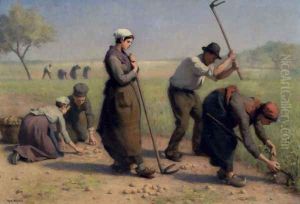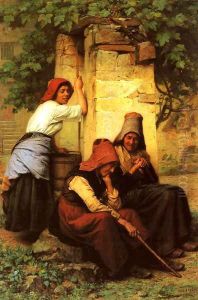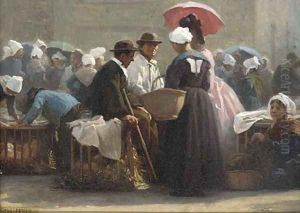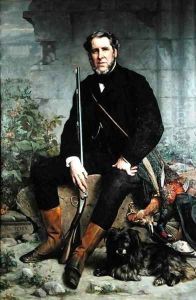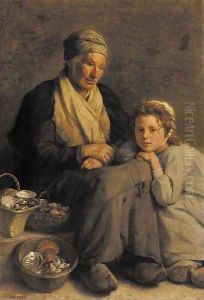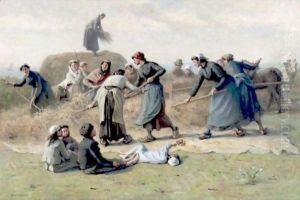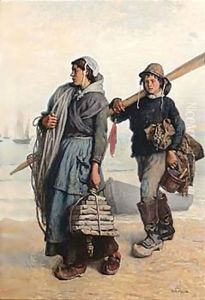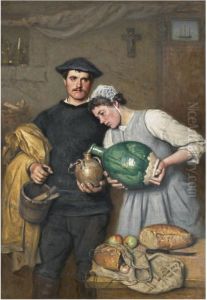Jacques-Eugene Feyen Paintings
Jacques-Eugène Feyen was a French painter born on July 8, 1815, in Bey-sur-Seille, in the Moselle department of France. Feyen is best known for his work as a portraitist and photographer, capturing the rural and domestic life of the 19th century with a particular focus on the landscapes and people of Lorraine and Brittany. His artistic journey began under the guidance of his first teacher, his father, who was an amateur artist. Seeking formal education in art, Feyen moved to Paris, where he studied under renowned artists such as Michel Martin Drolling and François-Édouard Picot, both influential figures in the academic art world of France.
In the 1840s, after completing his studies, Feyen established himself as a professional artist. His early works predominantly featured historical and mythological themes, a common trend among artists of his time. However, as his career progressed, Feyen shifted his focus towards more contemporary subjects, capturing the essence of daily life in the French countryside. This shift was partly influenced by the Barbizon School, a group of artists who advocated for realism in art and took nature as their primary subject. Feyen's work began to reflect a similar ethos, emphasizing natural beauty and the simplicity of rural life.
Despite his alignment with realist themes, Feyen's style remained distinctively romantic, infused with a sense of nostalgia and a profound appreciation for the landscape. His paintings are characterized by their detailed depiction of natural and human elements, a testament to his skills as both an artist and an observer of life. In addition to his paintings, Feyen also embraced photography, becoming one of the early adopters of this new medium in France. He used photography not only as an art form in its own right but also as a tool to aid his painting, capturing fleeting moments and expressions that could later be imbued with color and texture on canvas.
Jacques-Eugène Feyen's contributions to French art were recognized during his lifetime, and his works were exhibited in several Salons, earning him accolades and the admiration of his peers. Despite the acclaim, he remained deeply connected to his roots, spending significant periods in Brittany and Lorraine, where he continued to draw inspiration from the landscapes and people. Feyen's legacy is that of an artist who bridged the gap between the romantic and realist movements, capturing the transient beauty of everyday life with a sensitivity and depth that continues to resonate. He passed away on May 27, 1908, leaving behind a body of work that remains appreciated for its insight into 19th-century French rural life.
